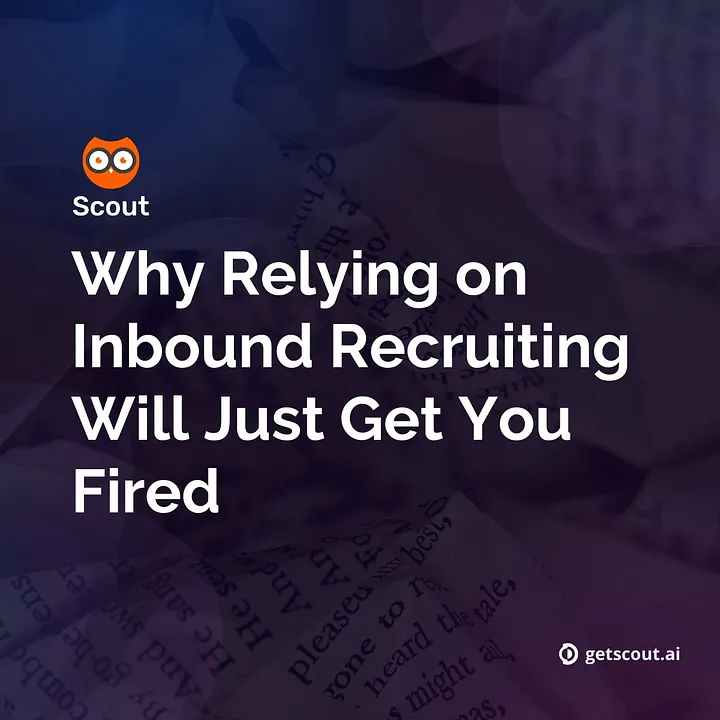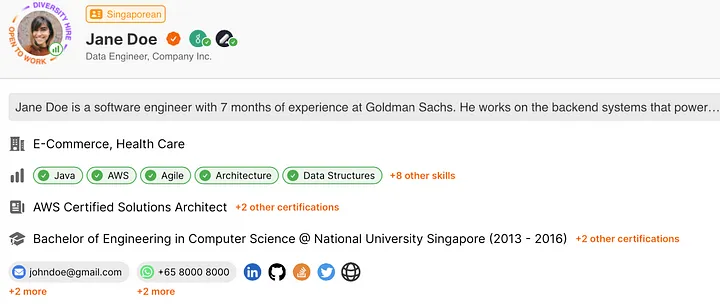You might be surprised at how many recruiters don’t actually recruit but wait for talent to walk through the front door with their resumes. While that may be effective enough in good economic times or for a global brand, not everyone shares this luxury.
What Exactly is Inbound Recruiting?
Inbound recruiting is a strategy consisting of attracting, engaging and hiring talent by making an organisation attractive for candidates to apply directly. It is a top funnel strategy that requires the organisation to build up their employer branding and in order to influence a favourable impression of their brand among potential applicants, and to build rapport during the recruiting process.

An Example of Good Inbound Recruitment
Some examples of common inbound recruitment strategies include employee features on a company’s blog or social media page, blogs that shed a favourable light on the company’s culture, policies, vision, mission and values, as well as video interviews, newsletters, and infographics, to name a few.
All these make up the inbound recruitment strategy to create awareness of the organisation among candidates, as well as make the company appealing enough to entice job seekers into applying for roles at the company.
A successful application of inbound recruitment marketing can be seen in Infosys, a major Indian multinational information technology (IT) corporation. They were able to attract more women to apply to IT roles, raising the proportion of women in its workforce to 39.1%. One of the ways in which they achieved this feat was through conducting campus outreach initiatives at engineering colleges across India, resulting in almost half of new hires being women.
Downsides of Inbound Recruiting
Inbound recruitment has its merits in attracting diverse and top candidates who possess exceptional skills and experiences and are genuinely interested in the work of the company, which also helps to increase talent retention.

However, it does have its downsides, especially if talent acquisition teams completely rely on inbound strategies to hire. Here are some of the pitfalls of inbound recruitment that could lead to zero or even bad hires:
1. Inbound Recruitment is a Long-Term Endeavour:
It takes time to build an organisation’s employer brand as well as their pool of quality talent. Moreover, if you’re a startup and not a multinational IT giant with a lot of resources to spare for an extensive inbound recruitment marketing campaign, relying solely on this strategy could fall flat.
2. Limited Pool of Talent:
Inbound recruitment mostly attract active job seekers, and companies miss out on the untapped pool of passive candidates who are not actively applying directly to open positions. This problem is further compounded by organisations receiving a high volume of irrelevant applications to the roles they are hiring for. Ultimately, hiring teams will miss out on the most talented candidates.
3. Inbound Applicants Lack Diversity:
Related to having a smaller talent pool to hire from, companies also face a lack of diversity among the candidates who apply for a job because these candidates already have an embedded interest in the company. This leads to companies missing out on candidates who hail from different backgrounds, industries, or possess different skill sets.
This not only affects diversity, equity and inclusion (DEI) efforts at the workplace, but it also prevents companies from reaping the benefits of a diverse workforce which include more creative and innovative problem solving, as well as brainstorming and decision-making that stem from having broader perspectives on the table.
• • •
Relying merely on inbound strategies can lead to a batch of new hires that underperform and lack diversity in mindset. When these new hires don’t do well, all eyes fall back on the talent acquisition teams that hired them.
Outbound recruiting is a better strategy that won’t get you fired:
What is Outbound Recruiting?
Outbound recruiting is a recruitment strategy that involve recruiters, sourcers, and talent acquisition teams actively seeking out new hires. It is a more proactive approach for recruiting talent. Recruiters hunt for suitable candidates for the role, rather than wait for them to apply for the job.

Some methods of outbound recruitment include cold calling or emailing potential candidates, using Boolean search methods to find top quality resumes, as well as leveraging social media to find, connect, and build relationships with potential candidates.
Benefits of Outbound Recruiting:
1. Access to a Larger Pool of Talent:
By reaching out to talent, recruiting teams will gain access to passive candidates, which would be otherwise inaccessible to companies relying solely on inbound recruitment methods. Passive candidates are currently employed but not actively looking for a new opportunity. However they could still take on a new role if a good opportunity presents itself.
2. Better Candidate Quality:
When HR professionals proactively reach out to talent that best suits the requirements of a role, they have a higher chance of finding the right fit for experience, skillset, and company culture. This is opposed to inbound recruitment which can draw large volumes of applications from candidates who may have irrelevant skills and experiences for the job.

3. Faster Fill Rates:
For some organisations, the flow of inbound job applications can slow down to a halt, which significantly increases their time to hire. Outbound recruitment offers this advantage of speed which is critical in a job market where top quality candidates are hired very quickly (in some instances, as quickly as 10 days!).
Source Candidates Effortlessly with Artificial Intelligence
The need to implement an outbound recruitment strategy cannot be emphasised enough, and yet we understand that it can be off-putting and relegated to the sidelines of the recruitment process.
After all, it can be time consuming, with tech recruiters reportedly spending most of their work week, at least 30 hours, on sourcing alone! It can also be a confusing process with trying to comprehend and make full use of Boolean search methods to discover ideal candidates.

At the end of the day, many recruiters and HR teams would rather provide a superior candidate experience, interacting with them as well as hiring managers, rather than on manual and time-intensive tasks like sourcing.
Talent sourcing can be a lot less painful when leveraging artificial intelligence analytics to take away the grunt work. Scout is an AI-powered search engine that allows recruiters and TA/HR teams to source candidates and generate a shortlist of recommended tech talent in under a minute.
All you need to do is drop a job description and Scout will source for talent that matches the job’s requirements.
Now, the once-manual task and time-intensive task of sourcing has become automated, easy, and effortless. Try it with a FREE 14-day trial, and get started in minutes.
Conclusion
If a company’s recruitment process is purely inbound, it is going to run into challenges such as a limited and less diverse talent pool, as well as the likelihood of losing out on top talent to other companies that are more proactive in finding and hiring the best talent.
With this in mind, it pays to implement an outbound recruitment strategy into your hiring process, to broaden your talent pool, find better quality talent, fill their open roles faster and hire the right candidate.
While sourcing for talent may be a time-consuming and complicated process, one that recruiters and TA/HR teams inevitably have to do, this can be made a lot easier and more efficient with the help of smart tools that can automate sourcing, allowing organisations to find better talent a lot quicker.
